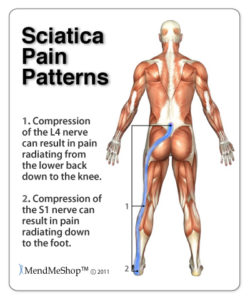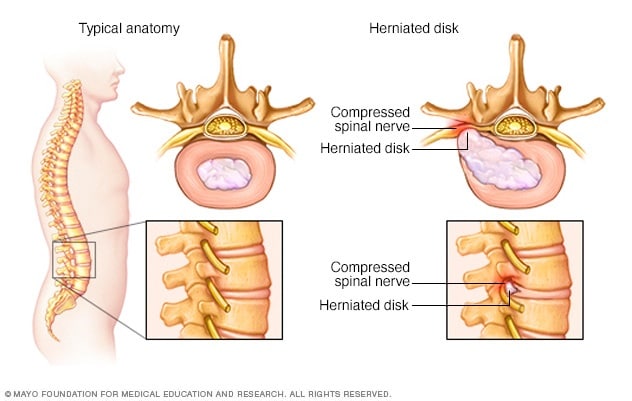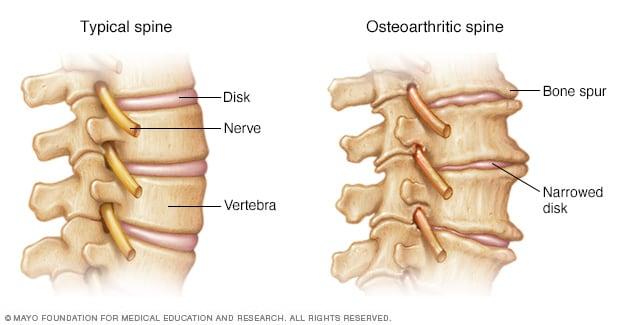
Sciatica pain patterns, 1. Compression of the L4 nerve can result in pain radiating from the lower back down to the knee.
2. Compression of the S1 nerve can result in pain radiating down to the foot, MendMeShop TM ©2011
Causes
-
Bone spurs on spine
Sciatica occurs when the sciatic nerve becomes pinched, usually by a herniated disk in your spine or by an overgrowth of bone (bone spur) on your vertebrae. More rarely, the nerve can be compressed by a tumor or damaged by a disease such as diabetes.
How is sciatica diagnosed?
Sciatica is diagnosed with a medical history and physical exam. Sometimes x-rays and other tests such as magnetic resonance imaging (MRI) are done to help find the cause of the sciatica.
Risk factors
Risk factors for sciatica include:
- Age. Age-related changes in the spine, such as herniated disks and bone spurs, are the most common causes of sciatica.
- Obesity. By increasing the stress on your spine, excess body weight can contribute to the spinal changes that trigger sciatica.
- Occupation. A job that requires you to twist your back, carry heavy loads or drive a motor vehicle for long periods might play a role in sciatica, but there’s no conclusive evidence of this link.
- Prolonged sitting. People who sit for prolonged periods or have a sedentary lifestyle are more likely to develop sciatica than active people are.
- Diabetes. This condition, which affects the way your body uses blood sugar, increases your risk of nerve damage.
Complications
Although most people recover fully from sciatica, often without treatment, sciatica can potentially cause permanent nerve damage. Seek immediate medical attention if you have:
- Loss of feeling in the affected leg
- Weakness in the affected leg
- Loss of bowel or bladder function

